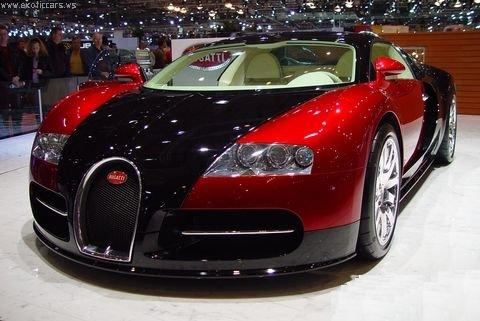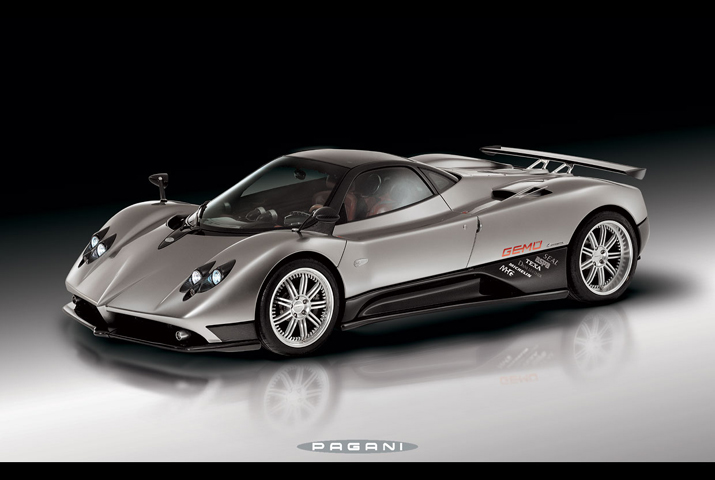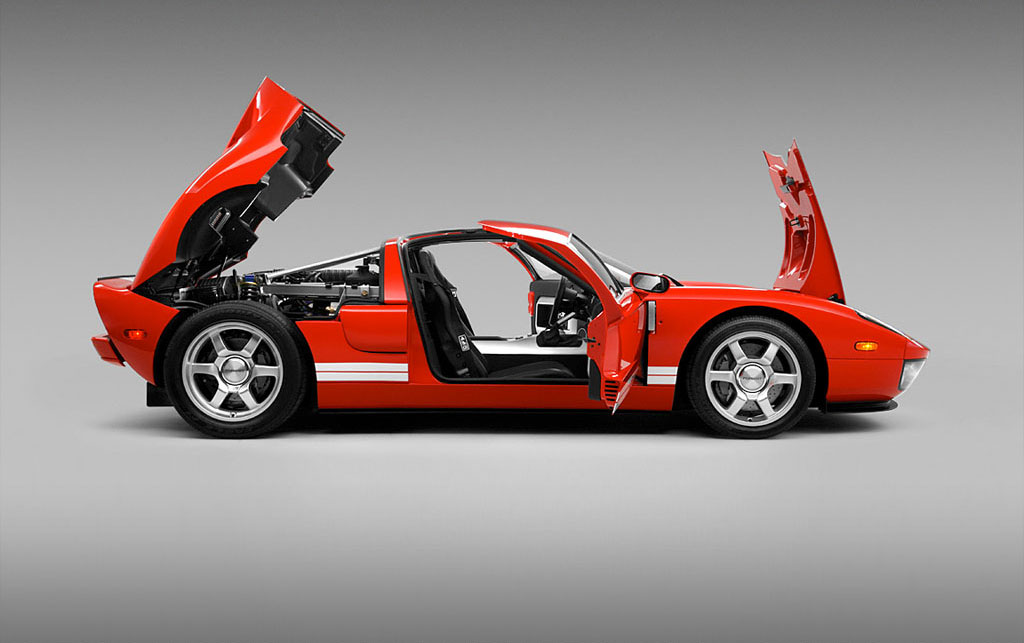|
|
|---|
Friday, February 10, 2012
2011 Donda cr-z With Prices Specification
The 2011 CR-Z is Honda's third hybrid, joining the compact Civic Hybrid and Insight, both of which seat five. Honda's CR-Z hybrid coupe remains on track as a 2011 model, on sale in late 2010. Honda wants sports-car enthusiasts to buy it not because it's green, but because it's fun.
 |
 |
For power, the CR-Z uses a relatively simple system that puts an electric motor in tandem with a gas engine, in this case a 1.5-liter four-cylinder. Though the engine shuts off when the car is stopped, it's always turning over when the car's in motion
 |
 |
 |
 |
 |
2012 Lotus Elise S Review and Price
 |
2012 Lotus Elise S Side View
2012 Lotus Elise S is a car that has the appearance and performance that has been updated. You will have a very good car if you plan to buy this car. 2012 Lotus Elise S is also very attractive and sporty look with bold colors. Interior features possessed by the 2012 Lotus Elise S is very complete and sophisticated that make you feel more comfortable when it is in this car.
 |
2012 Lotus Elise S Back View
The performance generated by the 2012 Lotus Elise S is good because it is supported by a supercharged 1.8 L I-4 engine mated to a 6-speed gearbox with constant mesh helical gears and open differential. This engine puts out 217 HP at 6800 rpm and peak torque of 184 lb-ft at 4600 rpm, the star of the show be improved torque (up from 156 pounds of torque ft-SC). Prices are given to the 2012 Lotus Elise S is estimated around $ 55,000.
Pontiac gto Cars Images
 The Pontiac GTO is an automobile built by Pontiac Division of General Motors in the United States from 1964 to 1974, and by GM subsidiary Holden in Australia from 2004 to 2006. It is considered an innovative, and now classic muscle car of the 1960s and 1970s. From 1964 until midway through 1973 it was closely related to the Pontiac Tempest/LeMans and for the 1974 model year it was based on the Pontiac Ventura. The 21st century GTO is essentially a left-hand drive Holden Monaro, itself a coupe variant of the Holden Commodore.
The Pontiac GTO is an automobile built by Pontiac Division of General Motors in the United States from 1964 to 1974, and by GM subsidiary Holden in Australia from 2004 to 2006. It is considered an innovative, and now classic muscle car of the 1960s and 1970s. From 1964 until midway through 1973 it was closely related to the Pontiac Tempest/LeMans and for the 1974 model year it was based on the Pontiac Ventura. The 21st century GTO is essentially a left-hand drive Holden Monaro, itself a coupe variant of the Holden Commodore.The GTO was the brainchild of Pontiac engineer Russell Gee, an engine specialist; Bill Collins, a chassis engineer; and Pontiac chief engineer John DeLorean. In early 1963, General Motors' management issued an edict banning divisions from involvement in auto racing. At the time, Pontiac's advertising and marketing approach was heavily based on performance, and racing was an important component of that strategy. With GM's ban on factory-sponsored racing, Pontiac's young, visionary management turned its attention to emphasizing street performance.
In his autobiography “Glory Days,” Pontiac chief marketing manager Jim Wangers, who worked for the division’s contract advertising and public relations agency, states that John DeLorean, Bill Collins and Russ Gee were indeed responsible for the GTO's creation. It involved transforming the upcoming redesigned Tempest (which was set to revert to a conventional front-engine, front transmission, rear-wheel drive configuration) into a "Super Tempest" with the larger 389 cu in (6.4 L) Pontiac V8 engine from the full-sized Pontiac Catalina and Bonneville in place of the standard 326 cu in (5.3 L) Tempest V8. By promoting the big-engine Tempest as a special high-performance model, they could appeal to the speed-minded youth market (which had also been recognized by Ford Motor Company's Lee Iacocca, who was at that time preparing the Ford Mustang).
The name, which was DeLorean's idea, was inspired by the Ferrari 250 GTO, the successful race car. It is an Italian abbreviation for Gran Turismo Omologato, (exact translation is Grand Tourer Homologated) which means officially certified for racing in the Grand tourer class. The name drew protest from purists, who considered it close to sacrilege.
The GTO was basically a violation of GM policy limiting the A-body intermediate line to a maximum engine displacement of 330 cu in (5.4 L). Since the GTO was an option package and not standard equipment, it could be considered to fall into a loophole in the policy. Pontiac General Manager Elliot "Pete" Estes approved the new model, although sales manager Frank Bridge, who did not believe it would find a market, insisted on limiting initial production to no more than 5,000 cars. Had the model been a failure, Estes likely would have been reprimanded. As it turned out, it was a great success.
Thursday, February 2, 2012
The Top 10 Fastest Production Cars for 2012
The Top 10 Fastest
The Top 10 Fastest
The Top 10 Fastest
The Top 10 Fastest
The Top 10 Fastest
The Top 10 Fastest
The Top 10 Fastest
The Top 10 Fastest
The Top 10 Fastest
The Top 10 Fastest
The question is not who would want to own one of the fastest cars in the world today, but who wouldn't? Below you will find a list of the fastest productions cars being produced for the year 2011. We have to warn you though, the prices that some of these automobiles are selling at, are more than some people will make in their entire lifetime.
Wednesday, February 1, 2012
Friday, January 20, 2012
2012 Lamborghini LP550-2 Gallardo Spyder special limited edition
2012 Lamborghini LP550-2 Gallardo Spyder special limited edition
2012 Lamborghini Gallardo LP550-2 Spyder special edition limited to 250 units in 2011 Los Angeles Auto Show. This version combines astonishing levels of the open-air driving pleasure that can only come from a super car with folding roof and incredibly agile and spontaneous movement. The new Lamborghini Gallardo LP550-2 Spyder optimized to provide better aerodynamics for a more enjoyable and safe driving with the use of specific settings, suspension, aerodynamics adapted to compensate for changes in the balance of power, 45 percent differential Self-locking, and the adoption of electronic transmission. It also has a "perfect adaptation of the ESP stability control system."
"With the Gallardo LP550-2, we are expanding the range of Lamborghini with a purist model, which adds another dimension of driving pleasure. This appeal, in particular, a special group of customers that use the dynamic driving style, real pleasure and I would try to help open air, "says Stephan Winkelmann, President and CEO of Automobili Lamborghini. "This special model with rear-wheel drive is a logical extension of our range of models with all-wheel Spyder".
The most important technical characteristics of the Lamborghini LP550-2 Spyder, the model designation already recognizable - LP stands for longitudinal / rear, center, embedded longitudinally in front of the rear axle. Refers to the 550 horsepower and 2 is a rear wheel drive. At Lamborghini Spyder word means the final synthesis of exciting, highly expressive design, super sports car in the open air the ultimate thrill and fun for all the senses.
Lamborghini Gallardo Spyder LP550-2 with a rear-wheel drive is ideal for the kind of sporty driving style you love the most practical and energetic driving. The installation of pavement to the rear is a reliable and stable at all times while on the front axle steers with high levels of accuracy and limits the movement to an absolute minimum.
2012 Lamborghini LP550-2 Gallardo Spyder special limited edition
With the most powerful V10 engine, controlled oversteer is not a problem, although there is always and only to the extent required by the driver. Its easy management of on-road ESP and assistant designed to make these cars Lamborghini Gallardo LP550-2 Spyder outstanding sports car safe to drive.To form the unique character of driving pleasure and safety engineers made extensive modifications to Bologna to San Lamborghini Gallardo Spyder LP550-2, developed specifically for these new features. Not only is the disk centered on the rear axle, the car has been completely reconfigured in all its dynamic components. It includes settings for shock absorbers. Aerodynamics have been adjusted to reflect changes in the distribution of forces.
Vehicle to show their wares for the rear axle with a 45 percent differential locks as well as the adoption of electronic transmission. All filled with a fine-tuned ESP stability system. While the standard program puts the priority on stability, the program allows angles derived great course and provides an assessment of the full dynamics of intense LP550-2. All the superior performance of the Gallardo chassis fully maintained - a pleasant bodyroll comfort, as well as its excellent driving stability at high speeds.
2012 Lamborghini LP550-2 Gallardo Spyder special limited edition
2012 Lamborghini Gallardo LP550 Engine-2 Spyder will be powered by the same engine found in the sedan: 5.2-liter V10, which provides a total of 550 hp and 398 Nm of torque. Lamborghini Gallardo LP550-2 unit is connected to the Spyder recently adopted electronic transmission. However, this setting is 3351 pounds Gallardo sprints 0-60 miles / h in 4.2 seconds on the way to a top speed of 198 km / h.Heart Gallardo - 5.2-liter ten-cylinder engine - also set and its characteristics are optimized for the rear-wheel drive, providing a perfect combination of fun and exciting high-speed, traction, exuberant and powerful melodies in all keys.
With the Gallardo LP550-2 Spyder, Lamborghini expands its line of the most successful of all time (in today's total of 11.800 was built in St. Bologna), with an amazing version, which continues the successful identification of its range . This includes the LP560-4 Spyder, as well as high performance Gallardo LP570-4 Spyder performance, which has a further weight reduction through lightweight carbon fiber technology. The latest version of the coupe versions of the Gallardo LP570-4 Super Trofeo Road - road racing version of the car found in the fastest one-make series racing in the world.
2012 Lamborghini Gallardo LP550-Price 2 Spyder starting price of $ 209,000, not including original shipping charge and $ 2,995 gas guzzler, to go on sale in March 2012.
Subscribe to:
Comments (Atom)





















































